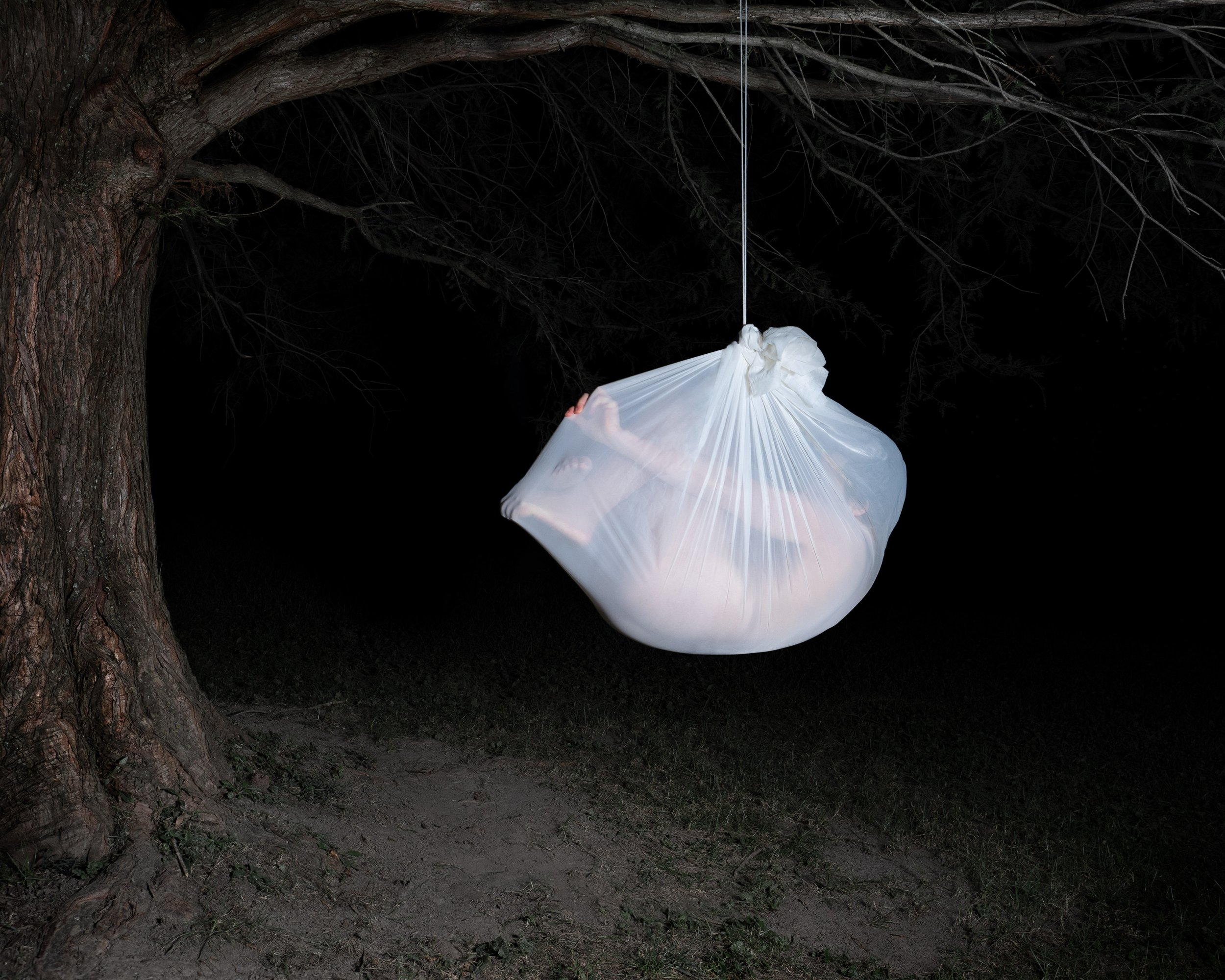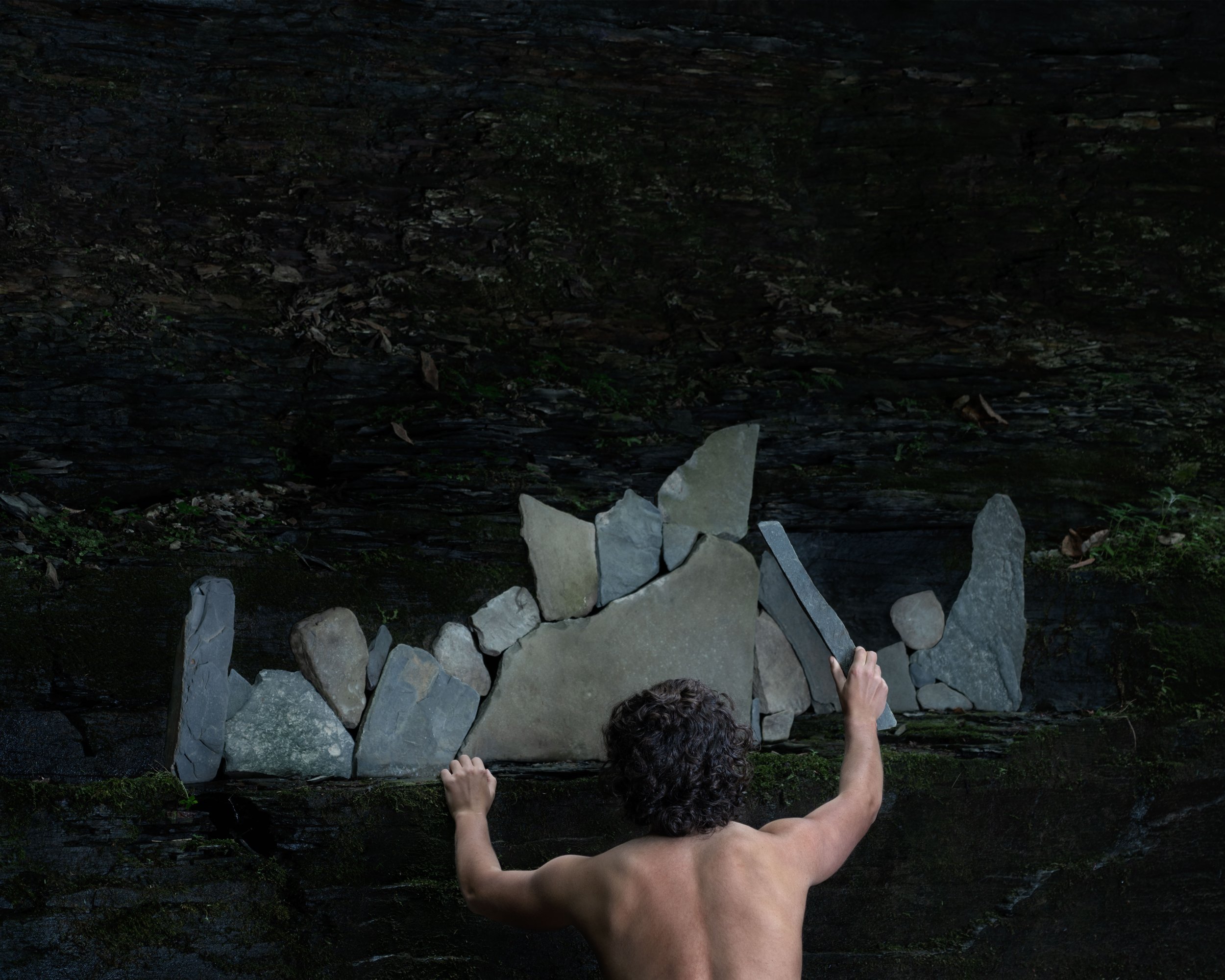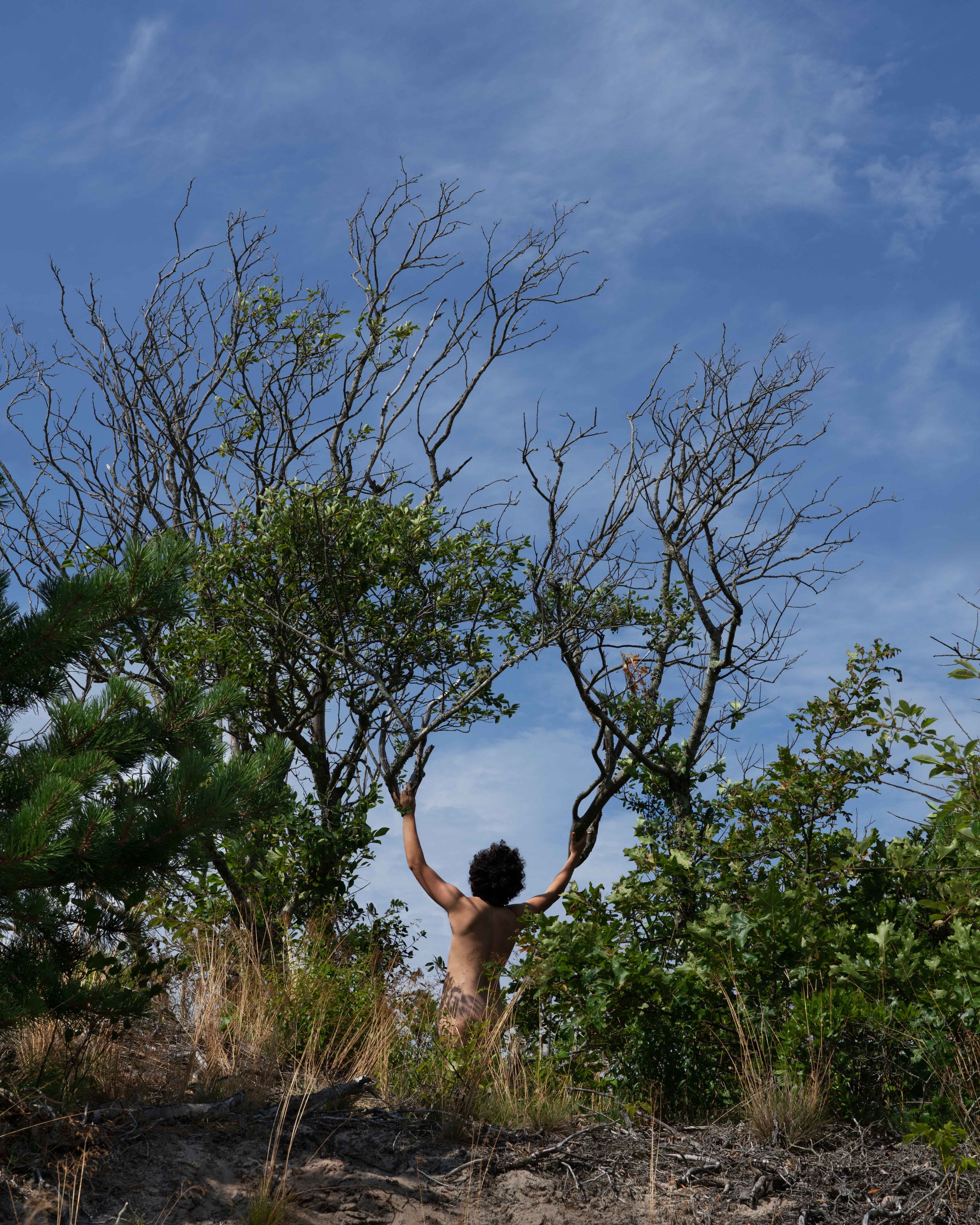Cai quirk: a journey of transcendence
September 1, 2022
Cai Quirk is a trans and genderqueer photographer who focuses on the intersection of gender diversity throughout history, its erasure, and contemporary reclamation and restoryation. Their self-portrait series Transcendence engages with connections between gender, mythology, and nature-based spirituality, and will be published with Skylark Editions in the winter of 2022. Recent talks include Myths of Gender, The Power of Restoryation, and Gender Diversity and Spirituality, given in conferences across Northeast America. They received bachelor’s degrees in music and photography from Indiana University.
as one, from Transcendence
My 5-year self-portrait series Transcendence interweaves visual and written stories to explore gender, queerness, spirituality, and mythology through lenses of healing and storytelling. In a society that tries to erase the presence of LGBTQIA+ folks, it is even more vital that we tell our stories, whether these are the everyday realities of our lives, or mythic tales of realities deeper than ordinary truths. The powerful act of queer restoryation creates new queer stories and myths, ones that empower, heal, and inspire. Binary ways of seeing the world will not simply disappear — they must be replaced by ways of seeing and honoring fluidity and change as natural and necessary. Transcendence explores queerness as embedded in the natural world, connects to liminal spaces, and creates stories that transcend time, place, and gender. This series will be published in a monograph titled Transcendence: Queer Restoryation with Skylark Editions in early 2023. The path to reach this culmination of Transcendence has been incredibly transformative, helping mend wounds in the physical, mental, and spiritual aspects of myself and others.
The first photos I ever created were already looking towards the ways mythic stories help us engage with everyday life. In time, turning friends into merpeople or forest nymphs and taking portraits of trees and rocks turned into more nuanced stories that touched deeper aspects of humanity. My first photo class with James Osamu Nakagawa at Indiana University, over seven years after I began creating visual stories, was one of several major turning points that led to Transcendence.
James’ portrait class began with a self-portrait series and I was somewhat terrified, knowing I wanted to make a project about trans and non-binary issues, but not ready for people to know that I was trans. I made A Stranger Death in response to, and honoring, all the trans lives lost to violence that year, each scene a tableau connecting overarching themes in a deadly pattern of lost lives. I never revealed the full meaning to the class. To them it was just about death. This series, however, began a journey of using photography and self-portraiture to recognize and address harm, to heal relationships between me, my body, gender, and society, and to invite others into spaces of healing as well.
Outside Morgue, from A Stranger Death
A state law was passed in Indiana that brought on another fear-based and reactionary trans self-portrait project. I had been physically and verbally attacked for being trans before, and now each queer slur yelled at me on the street felt like a physical danger too. I felt their pain cutting into me, so I cut them into photo prints of my body. I revealed queer and trans-specific slurs and my top surgery scars in the photos, finally coming out to the class, still fearful but also not wanting to hide any longer. I had rephotographed the original prints, shining light past gels and through the cuts, lighting up the broken places with vibrant colors. The cracks let the light get through, both in the prints and in me. I now can recognize the process of creating these was a ritual that honored the pain and helped to release some of it from festering further within me, shifting the narratives of these wounds. Being surrounded by media with negative and harmful trans imagery, particularly in Indiana, didn’t help me believe I was worthy or capable of fully healing, and I also finally realized that responding from a place of fear in these projects was not helping me heal as much as I had hoped. Yes, they were purging some fear and frustration out of my system, but they weren’t giving me stories to replace the harmful ones with.
Fag, from Slurs
Years later, a spiritual mentor of mine would put words to this, saying “Nature doesn’t like a vacuum. If something is released, something else must fill the gap or the harmful thing will come back to fill the empty space.” I had been trying to release all the attacks, the awful lies and exaggerations about trans folks, without having many empowering stories or role models to fill the gaps. A study abroad in Japan, again with James Osamu Nakagawa, began to change that. For the first time, I learned that some spiritualities have deities that mix and queer gender. Shintoism, which is prevalent in Japan, includes Inari and Kitsune who can each appear as male, female, or as foxes. It was incredibly powerful to see these connections reflected in places beyond just myself, and I felt empowered to explore further links between my own gender and my spirituality. The series I created there, Transgender in Japan, included the first fully positive representations in my photos of being trans/non-binary, the first overtly mythic stories related to gender, and the prayer stated simply on a prayer plaque in one image “I want to be at peace with my body.”
Now I finally have reached that peace. In the years since the shift in Japan, I have created hundreds more portraits empowering nuances of gender transcendence, but the core theme through it all is “restoryation.” Whether it is me or others in front of my camera, the resulting images work to shift dominant narratives, connect to threads of the past, and weave healing into our futures. My longest and largest series, Transcendence, does involve shifting narratives around gender, but if gender diversity was suddenly accepted tomorrow, the series would still have many themes of growth, healing, and integration that would resonate with people through various challenging journeys.
In Transcendence, creating each self-portrait became a ritual, a collaboration with nature and Spirit, an opportunity for growth and learning, and a rite of passage. So many of the ordeals I went through as a trans person were harmful, verbal and physical attacks that left trauma and scars, with little learned from them except pain and resilience. The ordeals and rites of passage in creating Transcendence were challenging too, but in ways that were freeing and empowering. I went in search of knowledge, and out there in the dunes and the forests I came face-to-face with the natural and the mythic, learning many stories, and finding more of my full self. I followed Spirit’s call, and in turn found just how much further I was willing to go to follow Spirit than I ever thought possible. Without this seeking, I would not have spent over an hour naked in 28 degree windy weather, or pushed through nearly the amount of bruises, burns, gashes, and scrapes that creating this project brought to my body, and yet the pain was worth it in so many ways. I know much broader limits for what my body can do, I am more settled and empowered in my physical form, I know better how to take care of hurts and injuries, and my spiritual growth has been immeasurable, but most important is what I’m bringing back to community from these journeys. I could have done many of those rituals and ordeals on my own, without a camera, but I knew Spirit was calling me deeper, to share what I was learning with people far beyond myself.
of water, from Transcendence
Human societies have erased so many queer stories, but nature is there holding those stories if only we can listen. I learned so many stories of queerness from the wind, trees, fires, and rivers, stories that were hard or impossible to find in the human world, stories of fluidity, growth, liminality, and overcoming artificial boundaries. This fluidity and queerness reached far beyond human notions of gender and sexuality, extending freely throughout the natural world. Transcendence explores many of these paths and liminal spaces between and beyond supposed binaries: male and female, night and day, land and sea, earth and sky, life and death, self and other, self and earth.
Another photo teacher, Elizabeth Claffey, encouraged me to try creating written stories as well as the visual ones. I knew immediately that I wanted to focus on themes other than transition narratives which are too often the overly narrow focus of news and media. The stories that emerged included a gender-neutral creation story, a mythic story about the formation of gender divisions and how we might heal, and several with themes of living into gifts (spiritual or otherwise) connected to being queer/trans. Though I was initially skeptical about whether these were just good exercises to keep creative juices flowing or really meant to end up in the eventual book, sharing them with my queer, Quaker, and other communities made it clear that the stories were not meant to stay closed away in a notebook. As I worked with the design of the book, serendipitous connections and new elements of the stories were revealed that made this even more clear. Each story was initially inspired by a single image, but certain sequences of images showed relationships interwoven by narratives that helped make the project as a whole stronger. Each image and story can stand on its own, but together they create an intertwined collection of photographic and literary stories that live into the book’s subtitle: Queer Restoryation.
Other articles and writings about Transcendence include more aspects of the project itself, but here I wanted to share a bit more of the story behind the story, the personal journey that led to the mythic and spiritual journeys explored in the book. Through opening to the mystic and the mythic, and through setting my life in service to my communities, I am transformed, and through that transformation I can invite others along journeys of transformation and inspiration. I hope to live up to the legacies of trans ancestors who have put in so much hard work to change society and who have smoothed and empowered my path, and I hope to help smooth and empower the path of others, so that together we can each heal, grow, transform, and thrive.
Pre-order Transcendence directly from Skylark Editions or visit Cai’s Kickstarter through October 1, 2022.






















